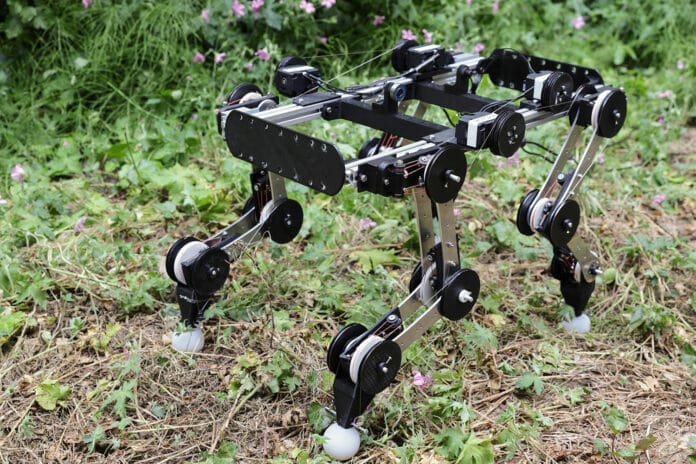With the latest advancements in robotics, engineers are coming up with new ways of building robots processing never-before-seen capabilities. Lately, we’ve seen a number of quadruped robotic dogs that can walk on almost any terrain – like sandy beaches and a narrow balance beam, robots that can dance, perform 360-degree backflips, play soccer, and whatnot. But all these robots require control motors to maintain their running gait.
Now, a Canadian robotics student Mickaël Achkar at Switzerland’s EPFL research institute, has built a quadruped robot that, once set in motion, can run without assistance or motors. The prototype robot was created based on existing motion-capture data of actual running dogs.
Achkar and colleagues first extracted the data on dogs’ synergistic movements and structured them so they could be summarized in a meaningful way. Through a method known as principal component analysis, the data was grouped into several vectors describing the main axes of dog motion. This information was then used to establish exact specifications for the robot.
The resulting bilaterally symmetric robot has metal rods as the bones, 3D-printed pulleys as the joints, thin cables as the tendons, and a few screws to hold it all together. Each of the robot’s four legs has three joints, and each is mechanically coordinated with the others, enabling the robot to run like a real dog.
The engineers tested their prototype on a motorized treadmill. They discovered that once the four-legged robot got going, it could run autonomously without having to activate its control motors. On the treadmill, it easily reaches a speed of 6 km/h.
“At first, we thought it might’ve been a fluke,” says Achkar. “So, we changed the design slightly and tested the robot again – and it couldn’t run anymore.”
The research team added a pendulum-like counterweight to the back of the robot so that it could stay in motion once it started. The robot’s body is designed to be able to respond automatically, much like some trout start swimming automatically when placed in water.
However, the robot still utilizes its control motors to achieve a broader range of motion, such as jumping and stepping over obstacles without the help of its counterweight.
“Our goal isn’t to compete with ultra-high-tech robotic dogs, but rather to explore bio-inspired robot designs,” says Achkar in the press release. “This entails honing a robot’s fundamental design and modifying its passive proprieties so that only simple control systems are needed – all while maximizing the robot’s capabilities. What we’ve done here – engineering the joints to work in synergy – has already proven useful for creating robotic hands and other body parts.”
